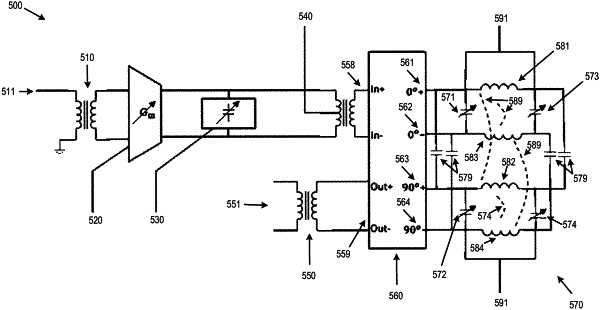| CPC H04B 5/0081 (2013.01) [H01Q 3/36 (2013.01); H03H 7/20 (2013.01)] | 29 Claims |

|
1. A wireless communication apparatus, comprising:
a reflective coupler with a tuned termination comprising a first reflection signal terminal, a second reflection signal terminal, a third reflection signal terminal, and a fourth reflection signal terminal;
a first variable capacitive element coupled from the first reflection signal terminal to the second reflection signal terminal;
a second variable capacitive element coupled from the third reflection signal terminal to the fourth reflection signal terminal;
a first inductive element having a first end and a second end, wherein the first end of the first inductive element is coupled to the first reflection signal terminal;
a second inductive element having a first end coupled to the second end of the first inductive element, and a second end coupled to the third reflection signal terminal;
a third inductive element having a first end and a second end, wherein the first end of the third inductive element is coupled to the second reflection signal terminal;
a fourth inductive element having a first end coupled to the second end of the third inductive element, and a second end coupled to the fourth reflection signal terminal;
a third variable capacitive element coupled from the second end of the first inductive element to the second end of the third inductive element; and
a fourth variable capacitive element coupled from the first end of the second inductive element to the first end of the fourth inductive element.
|